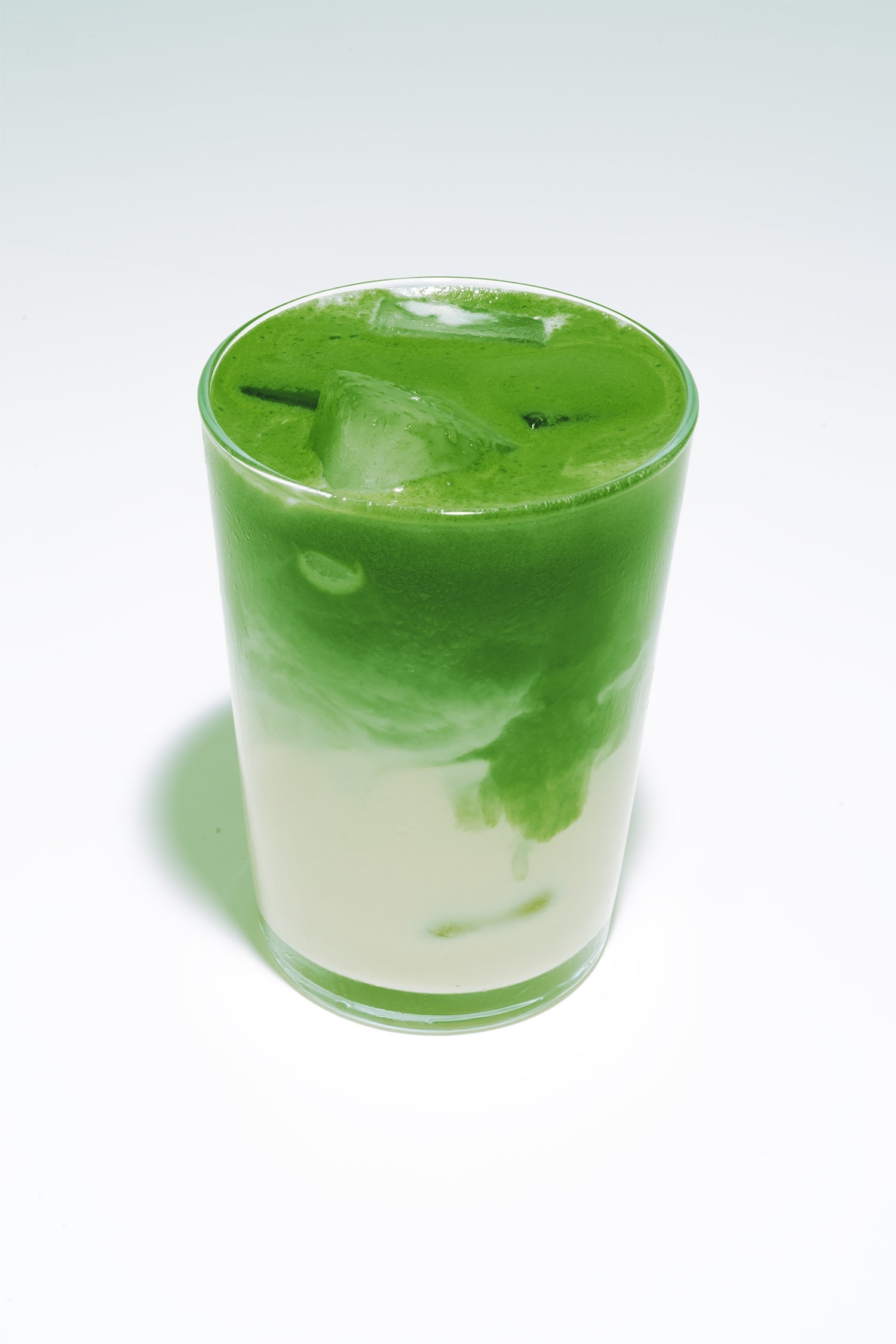
Matcha ingredients
What exactly is matcha made of? Learn in this guide why it's worth taking a closer look at the many ingredients of the green powder!
High-quality organic matcha from Uji, Kyoto, Japan, exclusively from the 1. HarvestOur Ceremonial has a particularly delicate, smooth aroma and a vibrant green color. Ideal for pure, gentle enjoyment – perfect for beginners and connoisseurs alike.
Cultivar: Oshii Ceremonial Blend consisting of Seamidori, Okumidori and Yabukita
Slightly richer and more bitter in taste due to a blend
the 1st & 2nd harvest from Uji, Kyoto, Japan.
Cultivar: Oshii Blend consisting of Seamidori, Okumidori and Yabukita
12 products

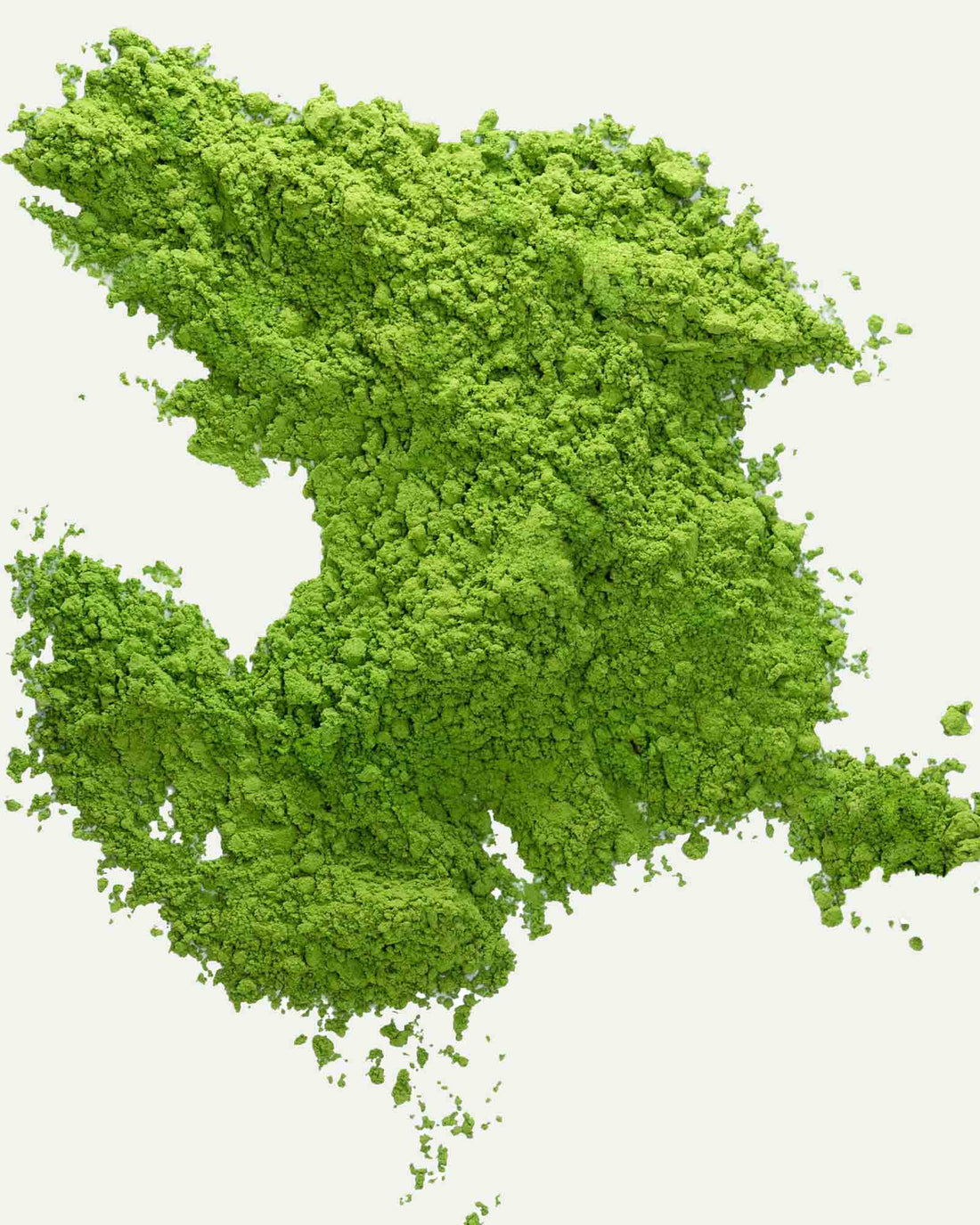


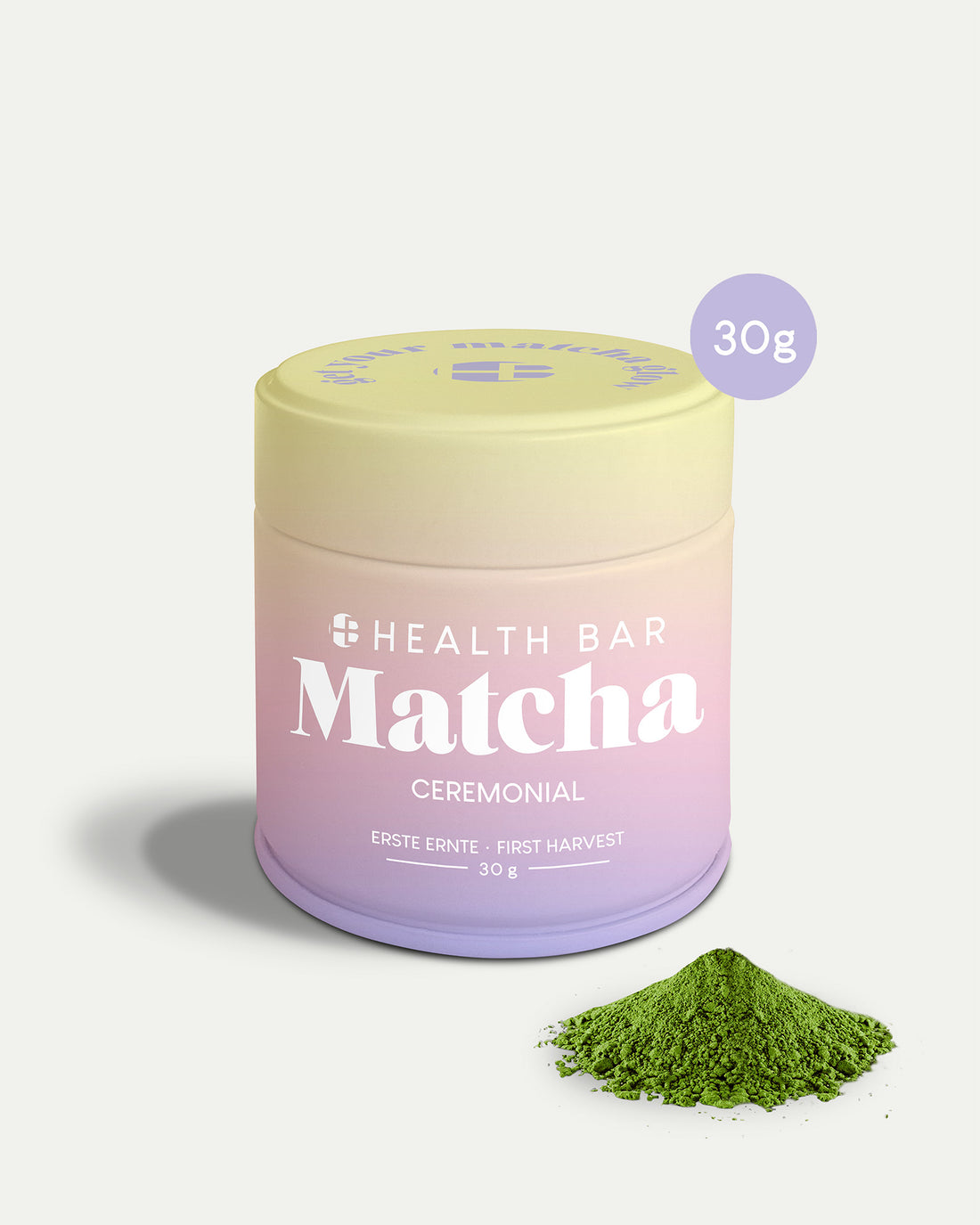

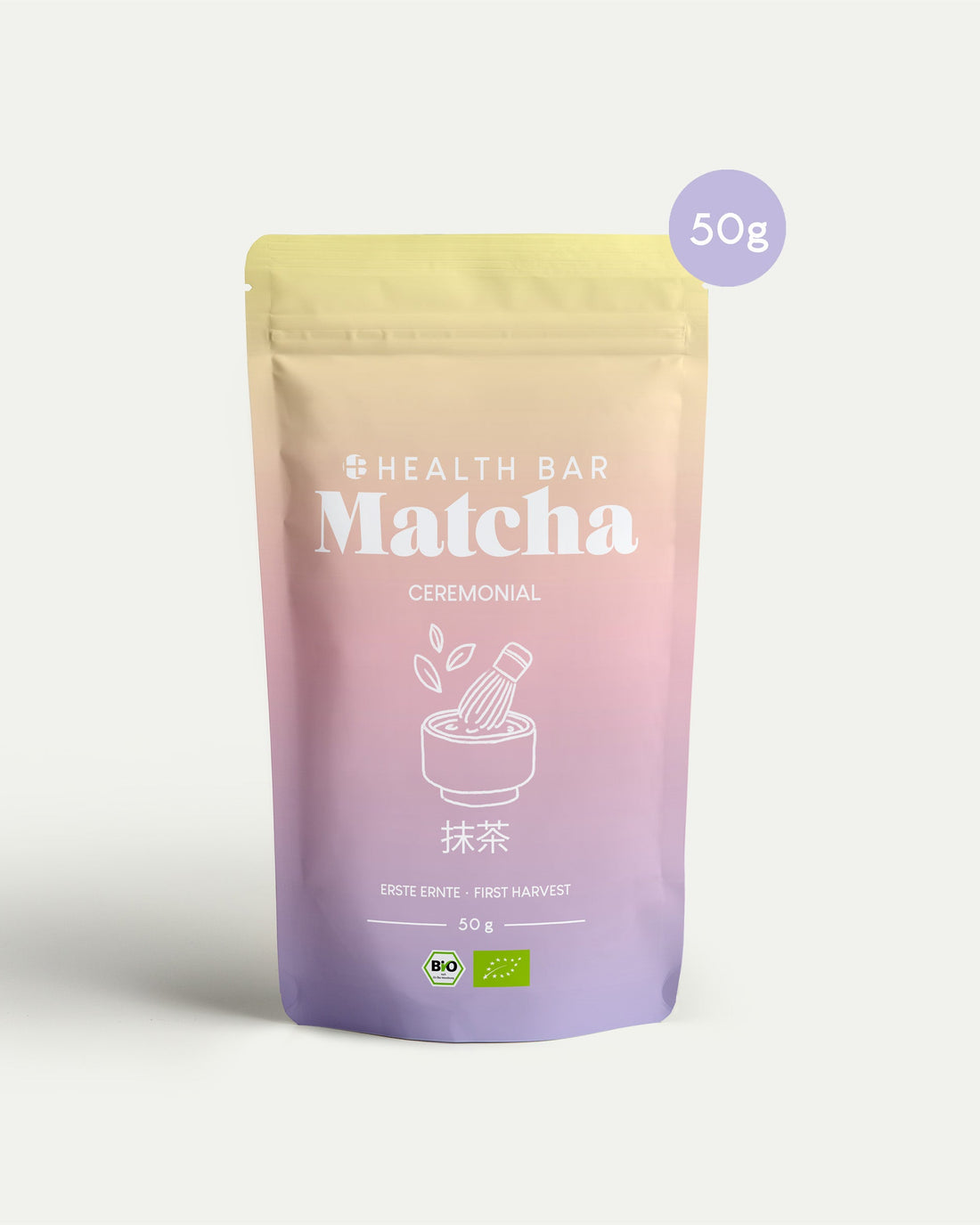

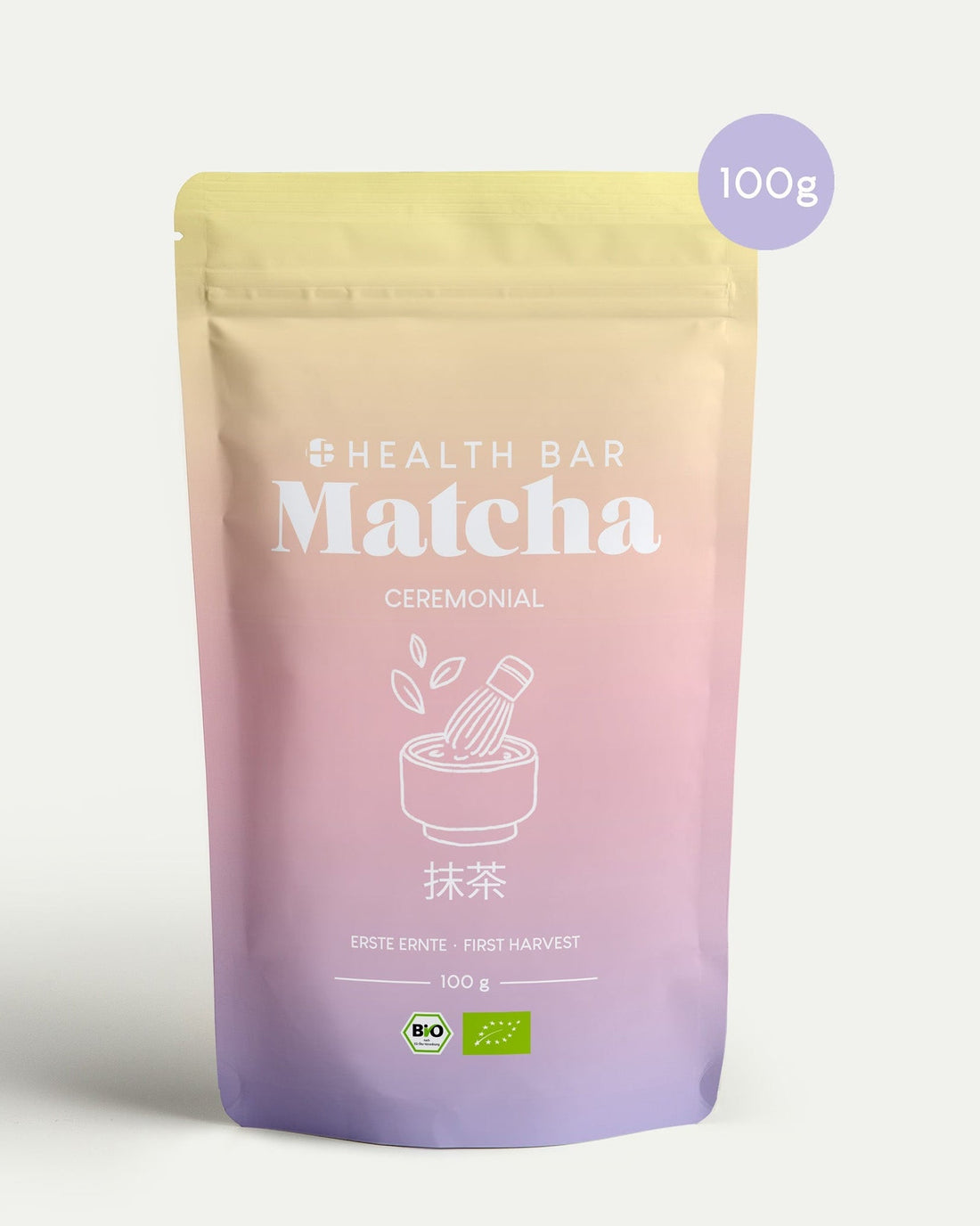





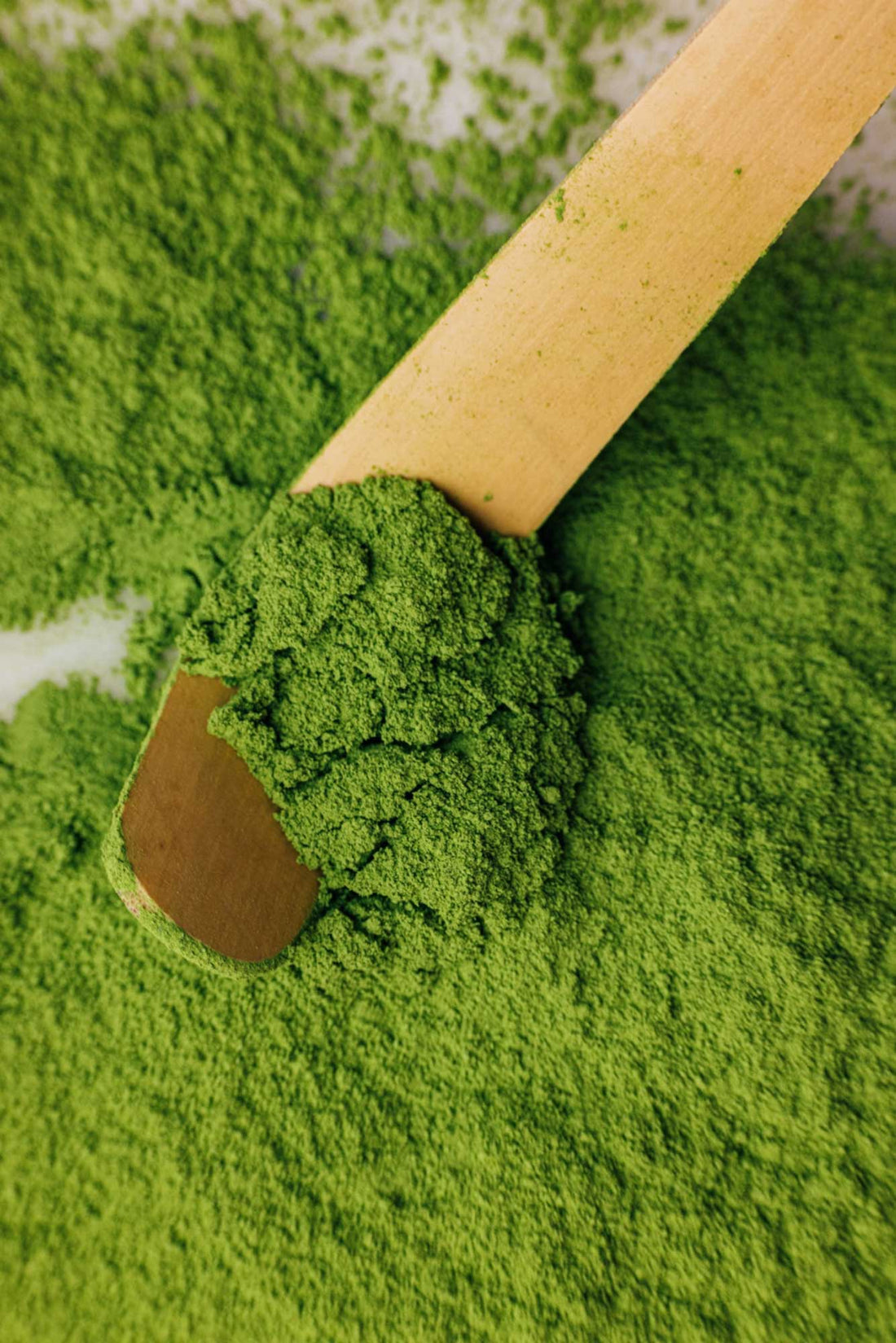
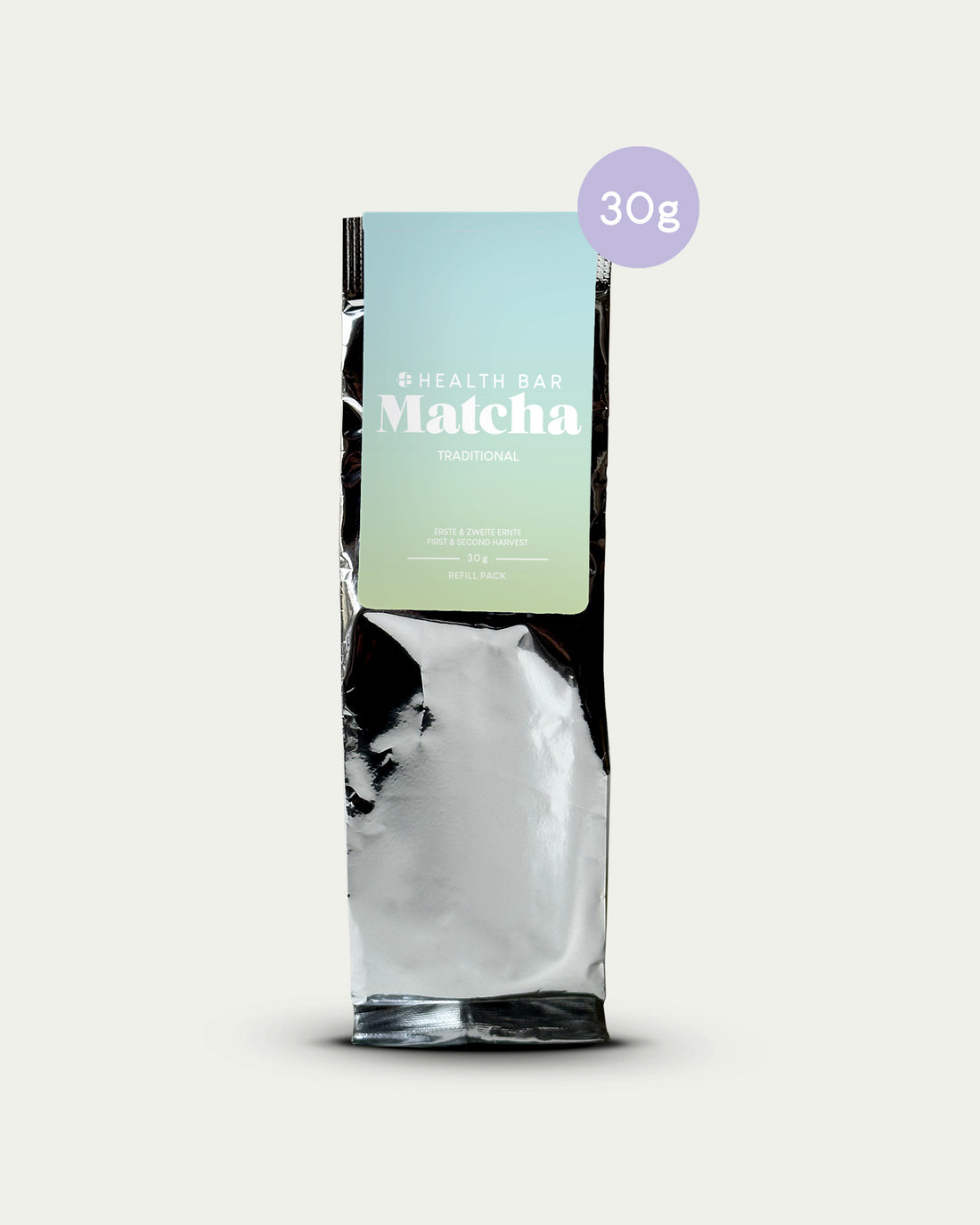

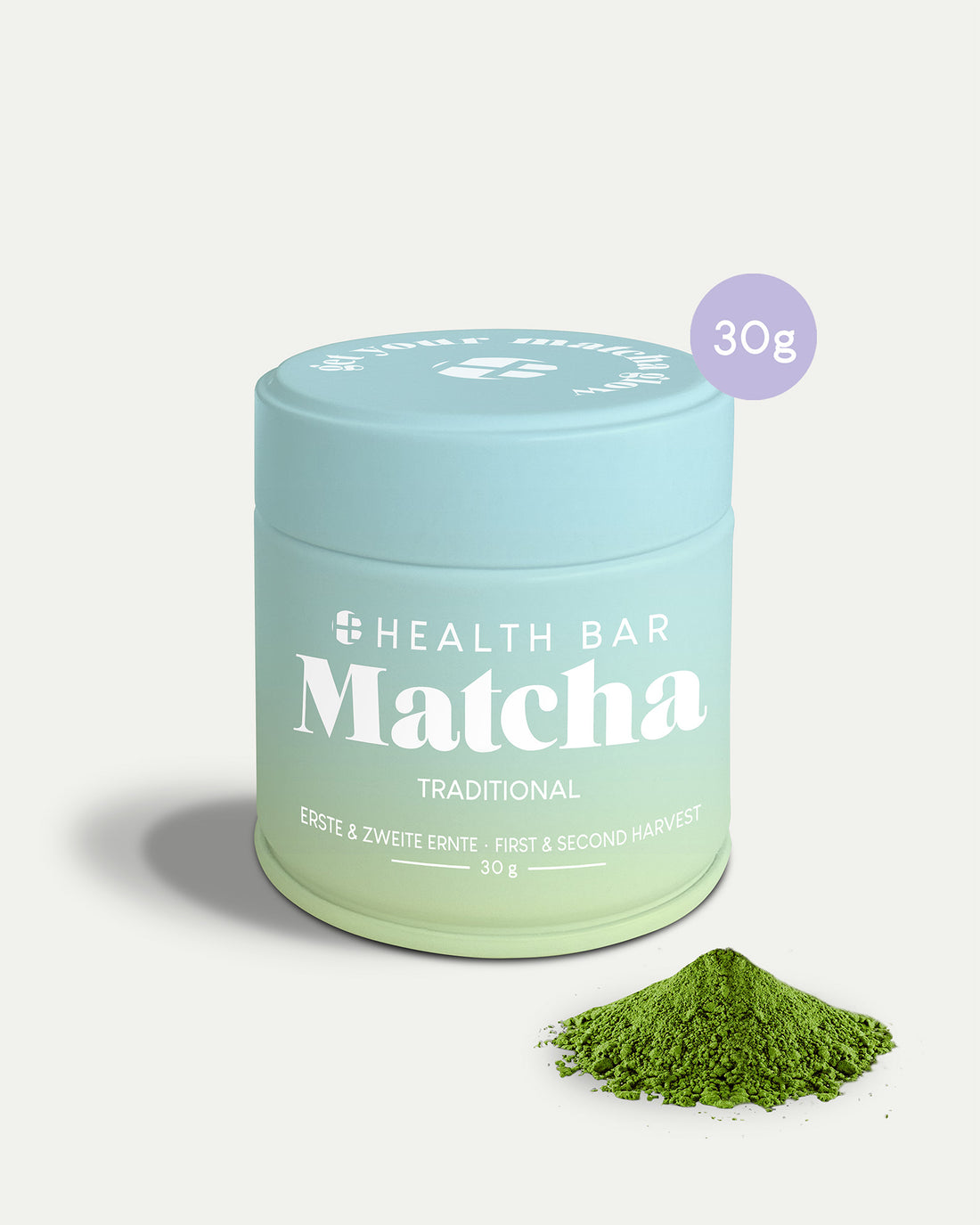

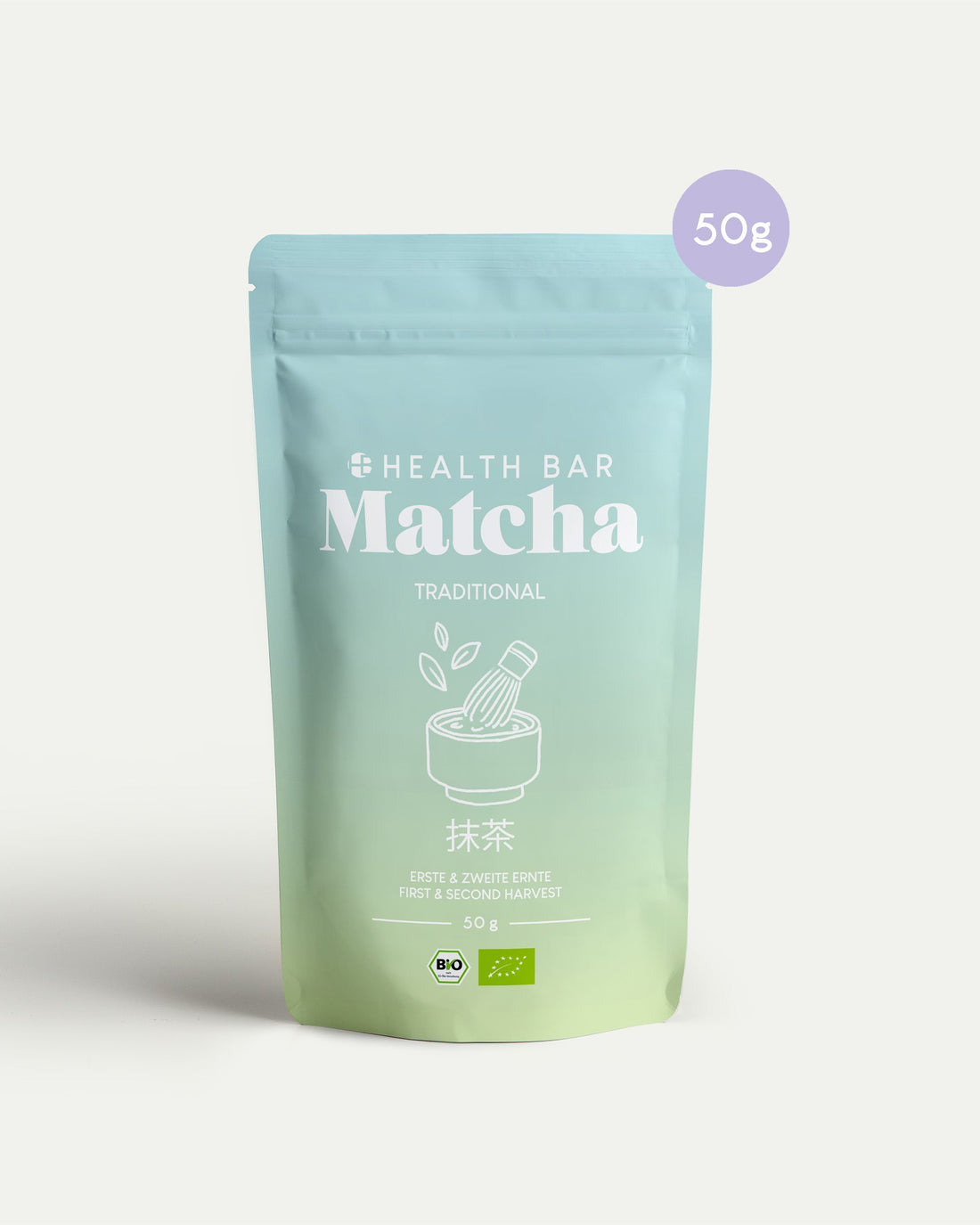

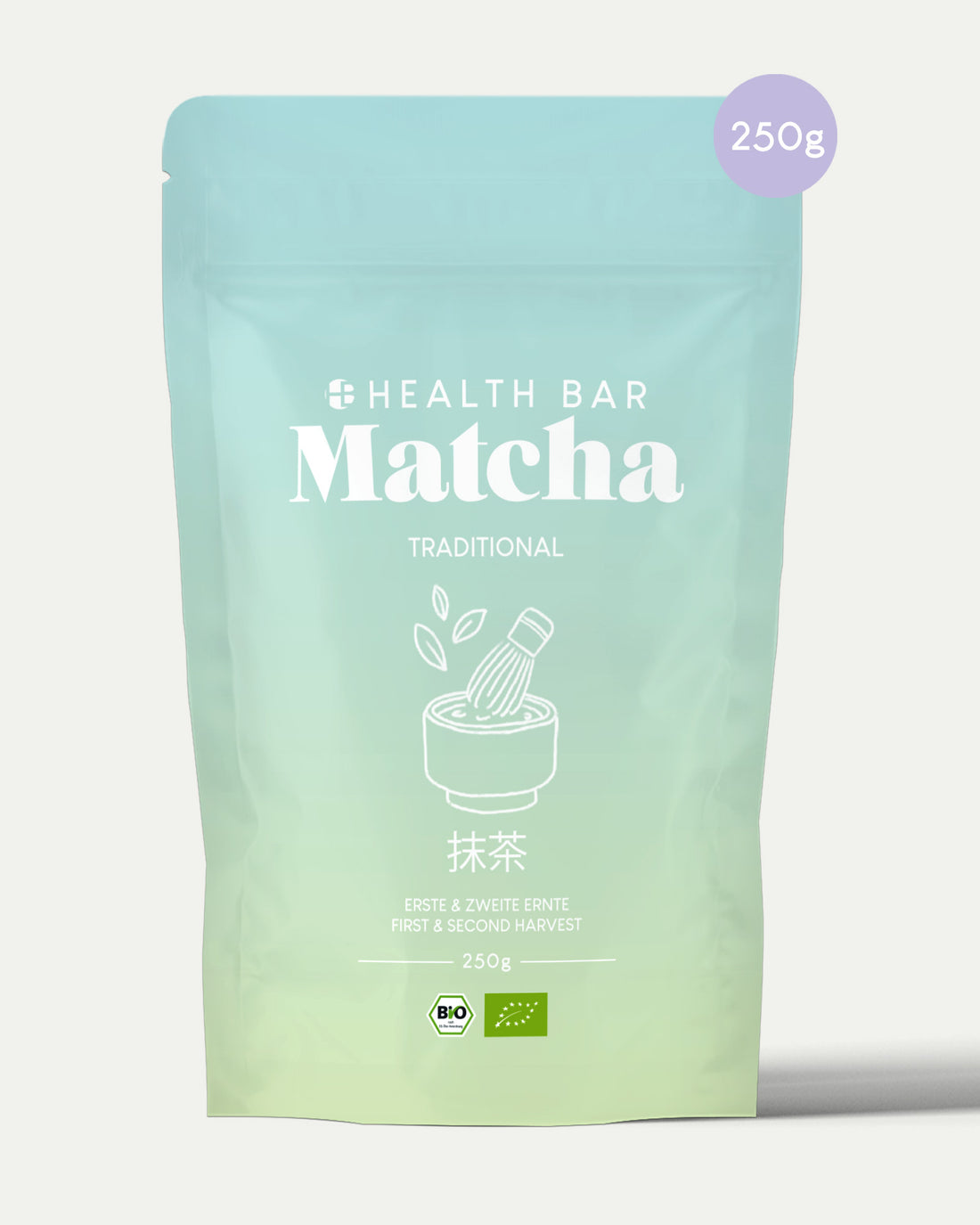

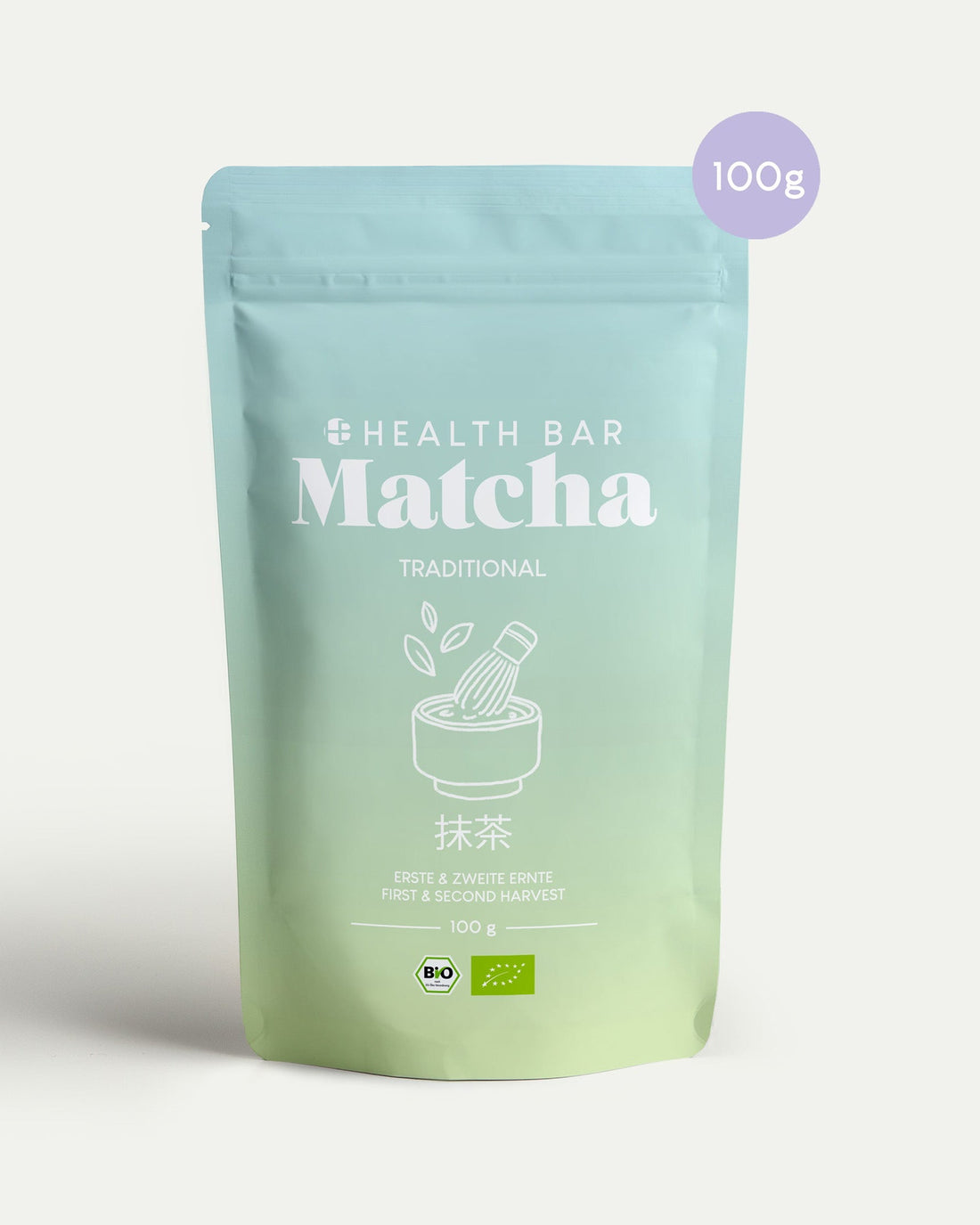

Organic enjoyment from East Asia
Ceremonial Matcha
Premium Matcha tea is characterized by its gentle, full-bodied aroma. It is made from the leaves of the first harvest (spring). These leaves are younger and more tender, resulting in a more delicate flavor.
Ceremonial Matcha is considered to be of particularly high quality and is often more expensive than traditional Matcha tea. In addition, our Ceremonial Matcha with 3290 mg per 100g a higher caffeine content than the traditional.
Traditional Matcha
Traditional Matcha is made from first- and second-harvest leaves. This blend can result in a slightly more intense flavor.
The taste of Traditional Matcha can be perceived as more robust or strong, yet it retains the characteristic sweetness and slightly bitter flavor of Matcha tea. Our Traditional Matcha Contains 2950 mg of caffeine per 100g.
DELICIOUS FOR ONE, GOOD FOR YOU FOR THE OTHER.
We'll tell you about the trendy food that has taken the world by storm: Matcha consists of a fine powder made from the dried leaves of green tea. The name itself comes from Japanese, 抹茶 (matcha).(ma cha), and literally means "ground tea". The Japanese themselves have long loved and used it for their traditional tea ceremony. Nowadays, matcha is not only drunk but also eaten – be it as a cake, Matcha chocolate Or ice cream. With its delicately sweet to refreshingly tart flavor, the powder is equally convincing on its own and as part of a team. Sweet, creamy, fluffy; many things harmonize with matcha tea.
Ingredients of Matcha
Just like tea in general, matcha is a wonderful alternative to other beverages. Unlike energy drinks and lemonade, pure matcha sugar-free and completely natural– provided you prepare it exclusively with water. This delicious powder can do a lot:
Are you unresponsive without your morning caffeine kick? Does the afternoon slump regularly make your eyes droop during work? Coffee is often the first choice when we want to wake up – but too much of it isn't good for your body. Besides, the bitter bean doesn't suit everyone's palate. However, you don't have to give up all stimulants entirely: try... Matcha instead of coffeeThe smooth taste of our premium matcha powder will delight even the most discerning palates. The caffeine it contains, sometimes called theine, is valued as a gentler alternative to coffee. This green tea powder is a bit gentler on you – a cup you can brew with about one teaspoon of matcha The product you win contains around 70 mg of caffeine. Coffee contains between 80 and 130 mg for the same amount.
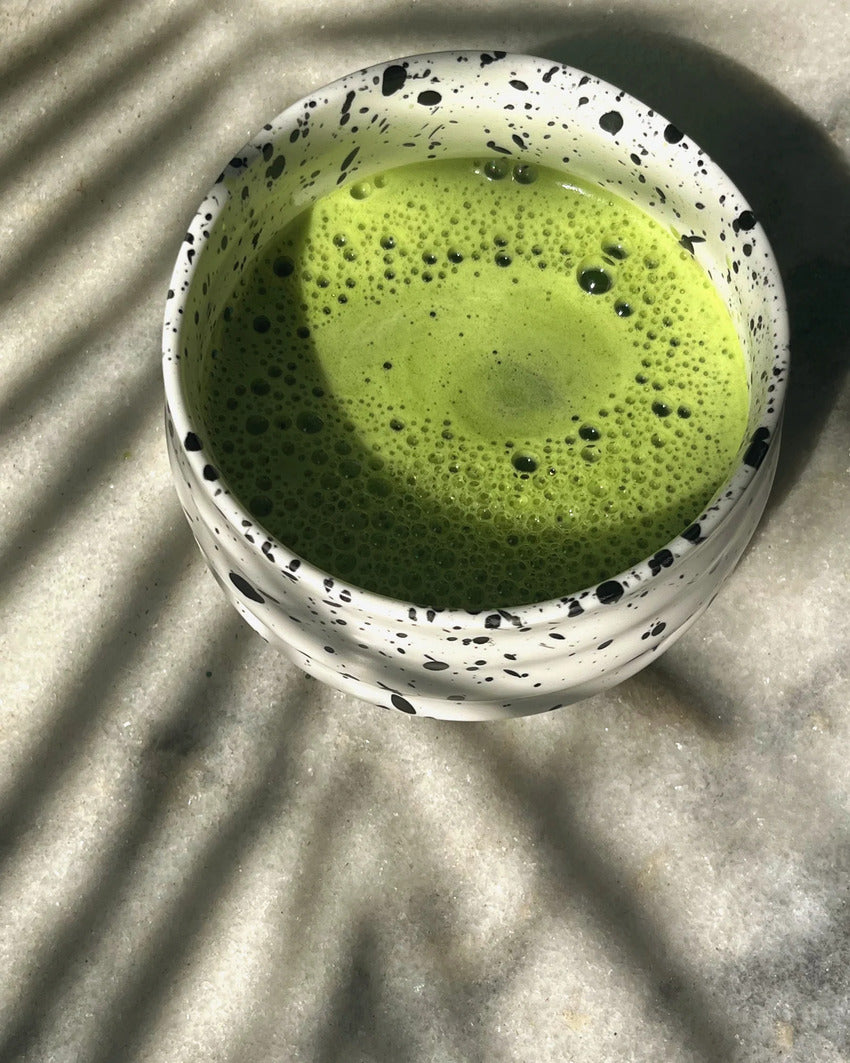
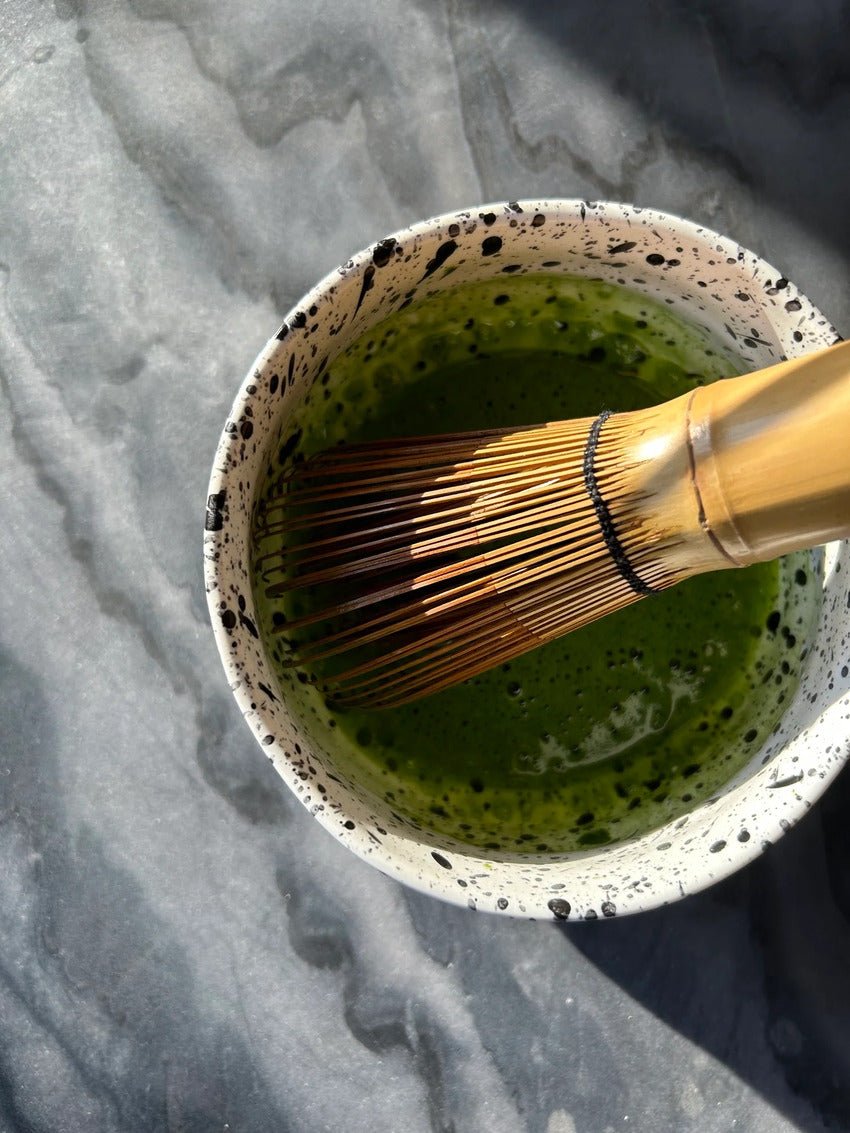
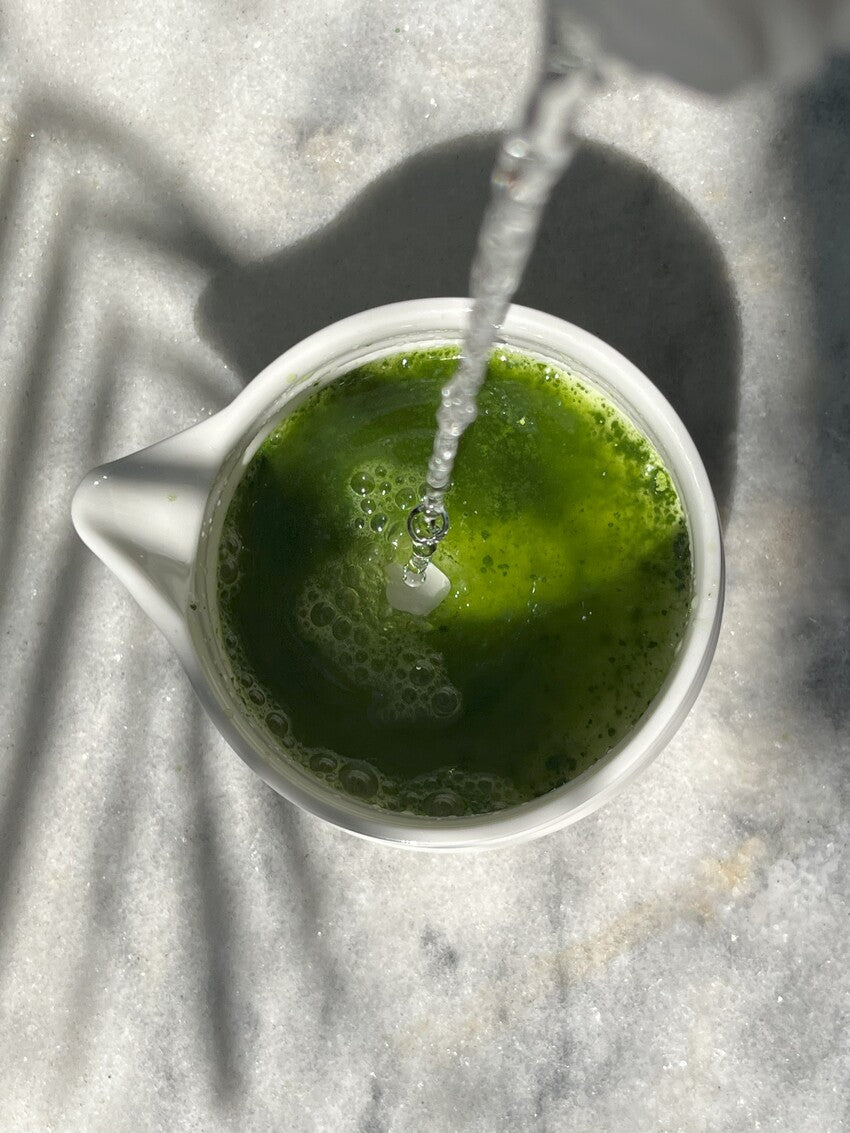
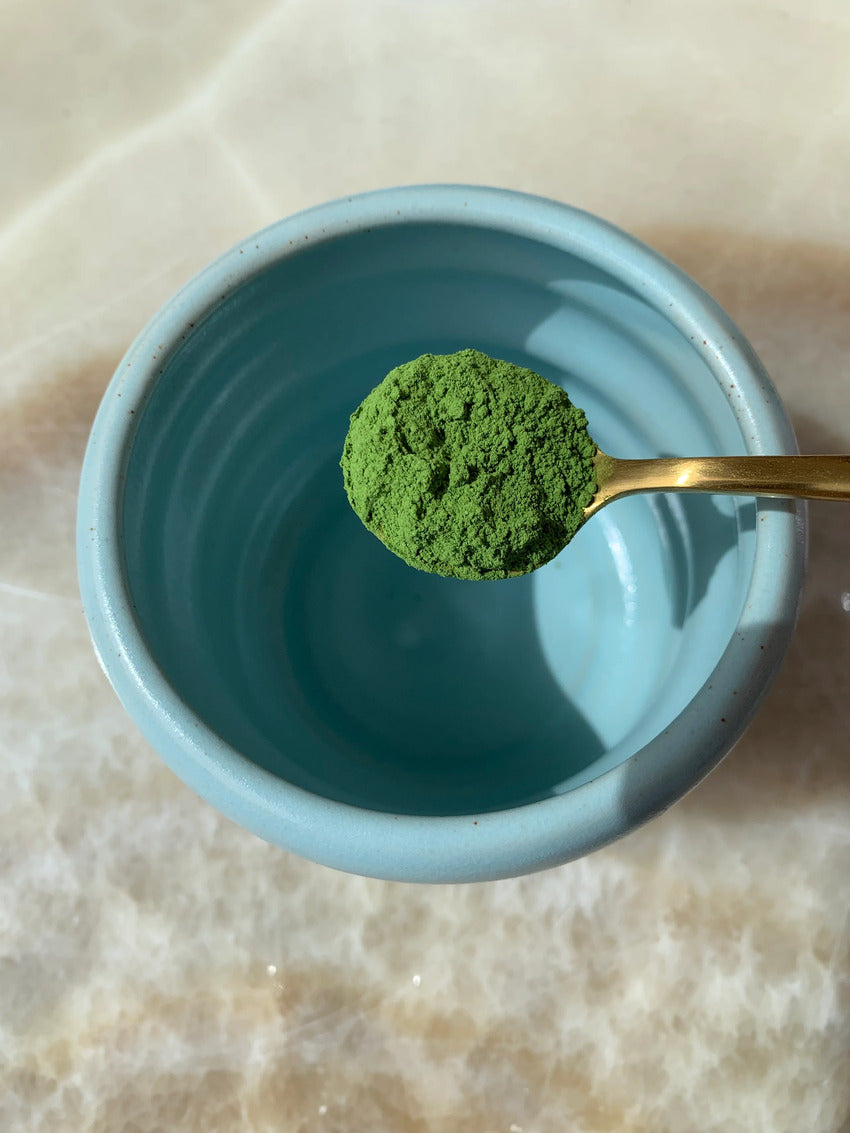
The main difference to conventional tea is that matcha isn't steeped or brewed. No plant parts remain. Instead, you mix water with the powder. This way, you drink the entire tea leaf and ingest its beneficial properties. all valuable ingredients Whether you prepare your matcha ceremonially or with modern Western kitchen utensils is entirely up to you! We'll show you both methods below. For optimal matcha tea preparation, we recommend our Matcha sets.
Matcha green tea: the traditional way
If you want to enjoy your matcha in the most traditional way possible, you need the right equipment. Matcha equipment, as it is also used in Japanese matcha preparation:
Heat the water, preferably with a low limescale content, to a maximum of 80 degrees Celsius. Using a bamboo spoon, place some matcha powder into the bowl. Pour in hot water, but only enough to mix with the tea powder to form a paste, to avoid lumps. Once the paste is smooth, pour in the remaining water while stirring. Matcha bowl and uses the bamboo whisk to mix paste and water and whisk until frothy.
Matcha green tea: the modern way
Cup, teaspoon and milk frother Most of us already have one at home. You can follow the traditional method: Blend hot water and matcha into a paste, then pour in more hot (or cold) water. The milk frother stirs everything thoroughly and creates a delicious foam on top.
Our tip: We still recommend using a whisk to avoid creating too much foam. Stirring with a chasen is also part of the ritual and has a somewhat meditative quality.
Give to your heart's content soy milk, rice syrup, ice cubes or add completely different ingredients! Do you need inspiration or would you like to use your matcha as Matcha Latte or Iced Matcha Latte Enjoy? Then take a look at our constantly growing Recipe collection.
If the package is unopened, it will keep for up to one to one and a half years from the date of purchase. Opened matcha is best consumed within four to six months.
Store your matcha tea powder in a cool place, away from light and air, for example in a container in the refrigerator
You can purchase absolutely pure organic matcha made from high-quality tencha leaves from us for 60 euros per 100 grams.
This depends on your taste, of course, but in general: Tencha is a real favorite among tea lovers – matcha made from this high-quality green tea tastes particularly mild.
There are different grades of matcha, which vary depending on the quality.
and intended use can vary. Here are some of the most common.
Matcha grade:
It is important to note that the terms and
Quality levels can vary depending on the manufacturer. It's worth checking the...
Reading product descriptions and trying different matcha varieties,
to find the grade best suited to your needs
find.
Premium MatchaThis matcha tea is characterized by its
It has a smooth, full-bodied aroma. It is made from the leaves of the first harvest.
(Spring) harvested. These leaves are younger and more tender, which leads to a
a more refined taste. Premium matcha is considered particularly high-quality.
It is well-regarded and often more expensive.
Traditional MatchaIn contrast, Traditional Matcha
from a mixture of leaves from the first and second harvest
produced. This mixture can result in a slightly more intense flavor,
without becoming bitter. The taste of traditional matcha can be described as
may be perceived as more robust or powerful, but it still retains the
characteristic sweetness and the slightly bitter taste of matcha tea.
The choice between Premium Matcha and Traditional
Matcha is a matter of personal preference. Some people prefer the
subtle, gentle aromas of premium matcha, while others prefer the stronger
Appreciate the flavor note of Traditional Matcha
While you normally pour hot water over parts of the plant to make tea and don't consume them, with Matcha you drink the whole green tea leaves - because the powder, which consists of the ground leaves, dissolves in the water.
Yes, matcha usually contains more caffeine than
regular green tea. This is because when drinking matcha, you...
The entire ground leaf is consumed. Ceremonial Grade matcha contains less.
Caffeine of a different grade.
Our tea farm is a traditional company that has been operating for generations to come.
has been in the family business for several generations and for some time
has been producing organic matcha for decades. The growing region for the matcha tea is part of
the best and oldest tea-growing regions of Japan: the region
Uji, located west of Osaka. The region is known for its clean water.
and nutrient-rich soil, free of pesticides. The following can be found on site:
Suitable climate: The mist from the Uji and Kizu rivers keeps the tea plants healthy.
moist and reduces the risk of frost damage
The tea farmers protect the plants with black
Textile screens or traditional straw are used to protect the leaves from the sun. Solar panels are also employed. This increases the chlorophyll content in the leaves, resulting in a softer flavor. Cultivation is carried out without pesticides. Annual soil samples and laboratory tests for heavy metal and radiation contamination are conducted to ensure the highest possible quality. Furthermore, each batch is carefully inspected for its
Mineral properties checked.
A good matcha is characterized by several features,
which you can consider when making your selection:
By taking these characteristics into account, you can...
Find the best matcha for your taste and needs. Our Health
Bar Matcha fulfills all the above!
Matcha has a unique taste that differs from
Our Health Bar Matcha differs from other tea varieties. It is strong and has...
a pleasant sweetness.
Some people who don't normally like tea find
The taste of matcha is pleasant, especially when it is prepared correctly.
and is used in drinks or foods that they already like, such as
e.g. matcha latte, matcha ice cream or matcha pancakes.
Others, however, may prefer the strong flavor and the
Matcha doesn't have a herbal note. If you're unsure whether matcha is right for you...
If you'd like to try it, you could test our Matcha in the 10g sample size.
before you purchase a larger quantity. We also have partners throughout Europe.
Cafes that serve our matcha.
Our matcha is packaged in tinplate cans, not in
Aluminum cans. We carefully select this packaging to ensure optimal performance.
To offer a solution for storing matcha.
It is important that the packaging of matcha is airtight and
It is opaque to preserve the freshness of the product.
It is worth mentioning that our empty cans are versatile
They are reusable. For example, they are ideal for
Storing spices. By reusing the containers, you contribute to...
Reducing waste and giving them a second life benefits both the
It benefits both nature and the environment.
Our Ceremonial Matcha Contains 60 mg of caffeine per gram.
Our Traditional Matcha Contains 50 mg of caffeine per gram
Ceremonial matcha typically contains **30 to 70 milligrams of caffeine per 2-gram serving** (about one teaspoon), which is a normal amount used to prepare a traditional bowl of matcha.
Compared to other caffeinated beverages, matcha generally contains less caffeine than a cup of coffee, which on average contains about 95 milligrams of caffeine. However, the caffeine in matcha is reduced by the high content ofLMatcha is balanced with theanine**, an amino acid that has a calming effect and helps make the caffeine hit smoother and longer-lasting. Matcha's caffeine hit often feels calmer and less hectic, making it a popular choice for people seeking a steady energy boost without the typical side effects of coffee, such as jitters or jitters.
Matcha not only provides an instant energy boost, but also promotes longer-lasting concentration and attention.

What exactly is matcha made of? Learn in this guide why it's worth taking a closer look at the many ingredients of the green powder!
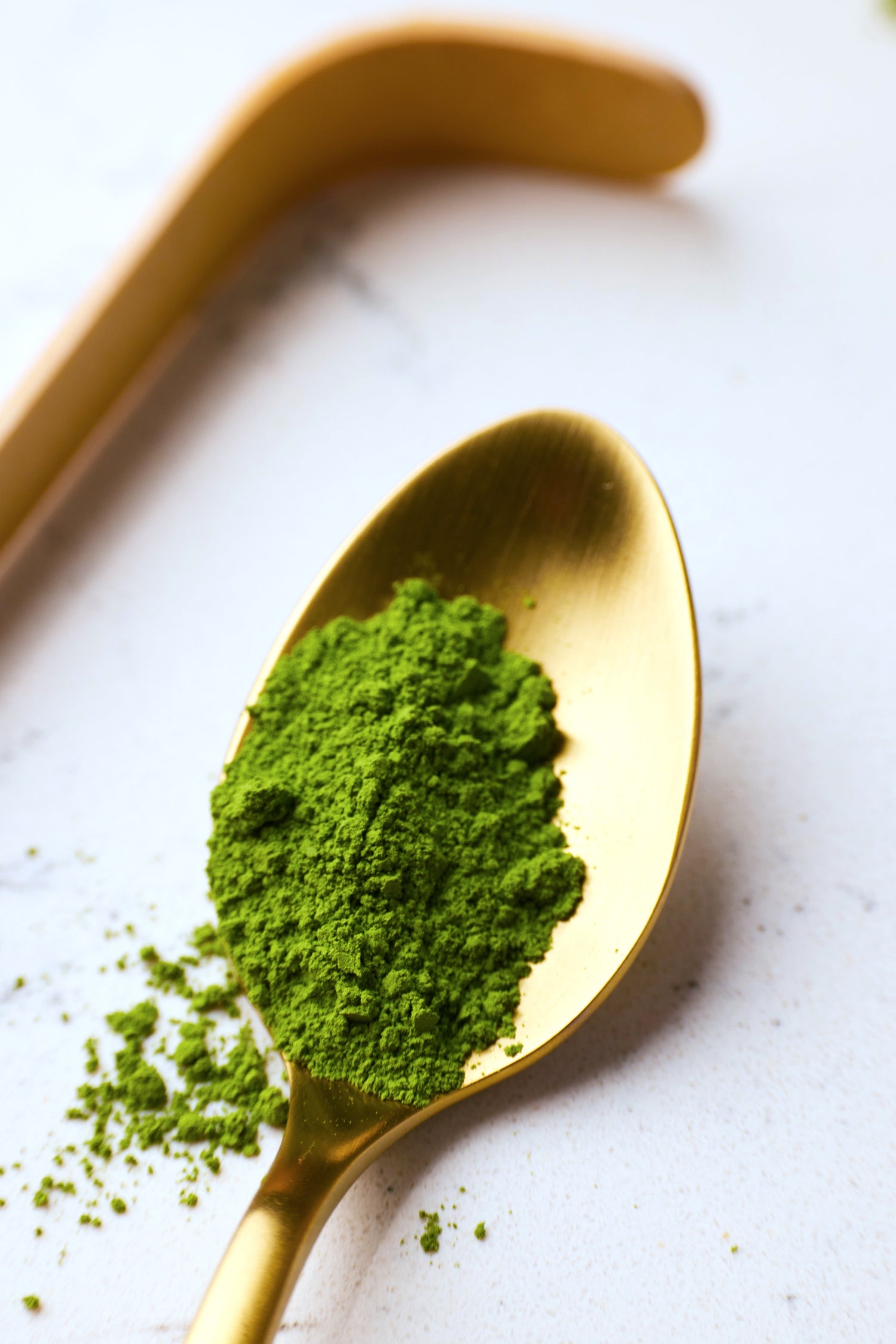
Best Matcha: How to Find the Real Enjoyment Matcha is much more than just a green trend – it is enjoyment, ritual, and a special moment in everyday life. However,...

Our Matcha Beginner's Guide provides you with all the essentials and practical tips for the perfect start into the world of high-quality organic Matcha. Learn which products are truly important...